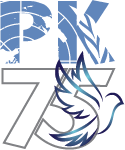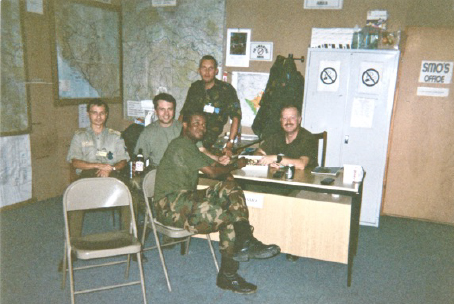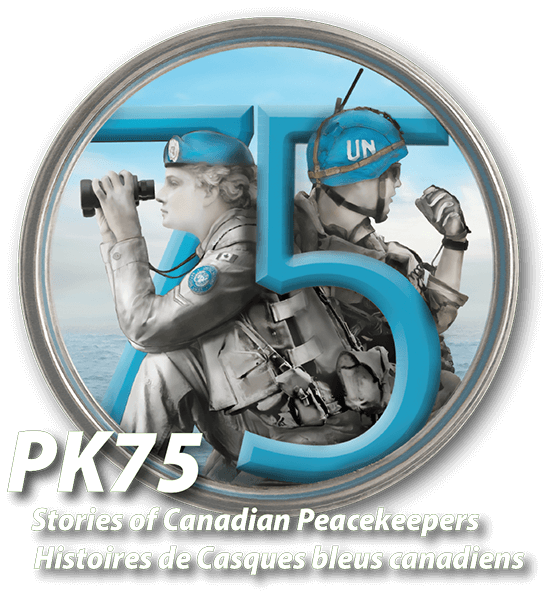

Calgary, AB, Canada
Bruce Henwood
Current Location: Calgary, AB, Canada
In early 1995, I was seconded to the United Nations (UN) as a Military Observer (UNMO) in the Former Republic of Yugoslavia (FRY), on a year-long deployment. I was one of just 15 Canadian officers joining the United Nations Confidence Restoration Operation (UNCRO) in the FRY. Pre-deployment training included communications, first aid, mine action, and cultural awareness. My family prepared for this extended absence not knowing exactly when we would see each other again. I departed on Canada Day for Zagreb with all my gear for one year. Most of the 15 of us arrived within a couple of days of each other, so our rented accommodation was very crowded, with our kit stacked everywhere.
We completed one week of UNMO training specific to the FRY, and were assigned to specific sectors, four in Croatia, four in Bosnia-Herzegovina, and several scattered elsewhere in the FRY. I was assigned to Sector North in Croatia, a large area comprising part of the rebel Serbian held region called the Krajinas. We were unarmed so as not to present a threat to anyone we encountered, but for us, this was a bit unnerving.
Divided into four teams and a HQ, I was sent to the town of Ogulin. We were 16 UNMOs, all from different countries, one interpreter and two vehicles. We lived on the economy in a large, rented house with six bedrooms, and were responsible for our own food, cleaning, etc. The house also served as our team base from which we provided daily reports to our HQ by secure and unsecure phones in our operations room at the house. Thrice daily, we conducted vehicle patrols equipped only with unsecure Motorola radios, to watch for unauthorized military activity and ceasefire violations in the zone of separation (ZOS), which straddled the unofficial border separating the warring factions, approximately 5–10 kilometres wide.
Shortly thereafter, I was pulled into the Sector HQ in Topusko to be a duty officer. Although displeased, I was told I would eventually return as the team leader. The HQ was in the Krajinas and accessed by crossing the ZOS into an area where things were completely different. Many houses were destroyed, clear evidence of the ethnic fighting between the Croats and the rebel Serbs. By the end of July the situation worsened. Curfews were imposed, electricity and water became intermittent, the sound of shelling and gunfire got closer, alert levels increased, and more military traffic was observed. By early August, things were very tense. Troops on both sides of the ZOS were fully mobilized, all ZOS crossing sites were closed, and we were essentially trapped in the Krajinas! As a precaution, we destroyed all unnecessary classified documents because neither side trusted UNMOs, and our intelligence indicated that both sides considered us as targets.
On 4 August, all hell broke loose as full-scale fighting exploded all along the ZOS. The Croatian Army entered the Krajinas intent on destroying the rebel Serb army, along with the Serbian civilian population. Fighting was intense. Topusko was overrun with thousands of desperate Serb refugees intermingled with fighting units as they all attempted to flee the Croatian advance. The fighting was over by 9 August, the rebel Serb army surrendered, and I was one of the UN representatives at the surrender talks.
Thereafter, UNMO roles shifted, and our patrols now supported the United Nations High Commission for Refugees (UNHCR), preventing atrocities and further ethnic cleansing. At the end of August, I was sent back to Ogulin as the Team Leader. We continued our daily patrols and worked our way into areas from which the UN had previously been excluded. Daily, we encountered Serbs who were unaware that they had lost the Krajinas and were in mortal danger.
My tour ended abruptly on 27 September 1995. I was on patrol in an area that we had never before accessed, heading towards some small hamlets to warn the Serbs to leave, when my vehicle struck an anti-tank mine in an unmarked minefield. It took over two hours to get me to a UN field hospital in Zagreb where my legs, which took the brunt of the explosion, had to be amputated. I was immediately flown to a large American hospital in Landstuhl Germany, finally returning to Canada two weeks later to start a new chapter in my life as a
double amputee.
My tour, despite the life altering outcome, was exhilarating, exciting, rewarding and put all my professional training to use.
Biography
Major Bruce Henwood (Ret'd) was born in Exeter, ON; the son of an RCAF pilot. After five years in the army cadets and three years in the army reserves, he enrolled in the Regular Officer Training Program at the Royal Military College of Canada in Kingston, ON. After graduating in 1980 with a Bachelor of Arts Degree in Honours History, he served in various capacities with the Lord Strathcona’s Horse (Royal Canadians) in Calgary, the South Alberta Light Horse in Medicine Hat, the Royal Canadian Dragoons, and the 8th Canadian Hussars (Princess Louise’s) in Lahr, Germany and across Canada.
In 1995, Maj Henwood was posted to the United Nations in Croatia (part of the Former Republic of Yugoslavia) as a United Nations Military Observer, or UNMO, with the United Nations Confidence Restoration Operation (UNCRO) . Stationed in Sector North in Croatia, Maj Henwood was a staff officer in the UNMO HQ in Tupsoko, in the rebel Serbian controlled Krajina region prior to and during Operation STORM when the Croatians reclaimed the rebel Serbian held regions by force. He then went on to be the UNMO Team Leader of an UNMO team comprising 16 UNMOs from many nations, in the town of Ogulin, in northwest Croatia. Duties were primarily monitoring Croatian military activity, cease fire violations and humanitarian support. It was while he was on patrol in the former no-man’s land in the northern Krajina region on 27 September 1995, that Maj Henwood was very severely wounded after his vehicle struck an anti-tank mine in an unmarked minefield. After six months in hospital, followed by 12 months as an out-patient, he underwent multiple surgeries, extensive therapy and rehabilitation in order to regain his independence, mobility and adapt to the “new normal” of being a double leg amputee. In 1996, Maj Henwood was awarded the Land Force Commander’s Commendation for his actions in Croatia, and for his determination in his recovery. He was subsequently medically released from the Canadian Armed Forces (CAF) in 1998 after 24 years of service.
In 2003, after a seven-year struggle with the Department of National Defence, Maj Henwood was instrumental in having the CAF disability insurance program overhauled, providing tangible compensation to all soldiers severely injured in the line of duty. Maj Henwood was presented with the Queen’s Golden Jubilee Medal in recognition of this activity in support of seriously disabled soldiers. In 2003 he was honoured by having a street named after him in the new community of Garrison Green in Calgary, AB. In 2004, Maj Henwood was awarded the Meritorious Service Medal by the Governor General for his actions in changing the military’s compensation plan. He was made a Rotary Club of Canada Paul Harris Fellow in 2005 for his contributions towards supporting seriously disabled soldiers.
In the summer of 2009, Maj Henwood retired from a second career as a project manager in the defence industry. He is actively involved in various organizations and institutes; notably he is a Past President and Life Member of the Royal Alberta United Services Institute. From 2005 to 2010 he was the Chair of the Special Needs Advisory Group, which provided advice to Veterans Affairs Canada on the New Veterans Charter, as it pertained to the needs of seriously disabled veterans. Maj Henwood continues to provide advice on the needs of seriously disabled veterans to the War Amps of Canada and the National Council of Veterans Associations in Canada. He was awarded the Minister of Veterans Affairs Commendation in 2011 for his work with seriously disabled CAF members and veterans. He continues to support the needs of disabled soldiers by providing advice and guidance on a regular basis through a network of contacts he has developed, and for this citizenship activity he is a recipient of the Queen’s Diamond Jubilee Medal. Maj Henwood currently co-chairs a Veterans Affairs Canada advisory group providing advice to the Minister of Veterans Affairs Canada on care and support of our Veterans.
Maj Henwood resides in Calgary, is married to Judy, and they have three adult sons and one granddaughter. He has a passion for travelling, model N scale trains, jigsaw and sudoku puzzles, Canadian military history and reading.

Major Henwood with some of his UNMO colleagues after duty shifts were over.

Major Henwood during the Croatian offensive Operation STORM prior to the arrival of thousands of refugees.


